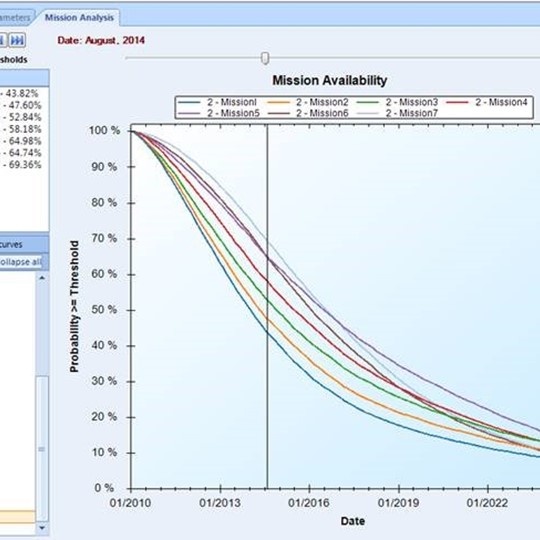
GPS Operational Profile for the Survival of Individual Functional Tasks (OPSIFT)
The Operational Profile for the Survival of Individual Functional Tasks (OPSIFT) program is a system for predicting Global Positioning System (GPS) satellite availability over a specific time period. The system is used primarily to support constellation replenishment planning decisions. The primary output of OPSIFT is a series of availability graphs based on the GPS missions the constellation can support.
Late-model GPS satellites are capable of performing not only Position, Navigation, and Timing missions, but also four additional missions related to various new radio signal types as follows:
- L1C - New civilian signal available on Block III and later GPS satellites
- L2C - New civilian signal available on Block IIR-M and later GPS satellites
- L5 - New Safety-of-Life signal available on Block IIF and later GPS satellites
- M-Code - New military signal available on Block IIR-M and later GPS satellites
These additional missions need to be managed to effectively predict life expectancy of a given satellite. OPSIFT provides a framework to make predictions in terms of individual mission capabilities both at the constellation and individual satellite levels. Mission availability results for individual satellites are produced and may be used as the basis for inputs to other programs requiring operational mission availability assessments.
- Modeling and Simulation
- Desktop Application Development
Air Force Space Command
